The 5 most impressive temples I visited in Japan
Atualizado em:
Two main religions currently coexist in Japan: Buddhism and Shinto. During my visit, I learned that the word temple was used for a Buddhist location and that most of them charged for the entrance, while Shinto locations are called shrines and were mostly open access. In this post, I listed the 5 most impressive temples I visited in Japan. Although I did visit amazing shrines like Fushimi Inari Taisha, it was the temples that struck me the most. Check out below:
Note: temples usually end with the suffix “Ji” or “Dera”.
Todai-ji, in Nara
I left absolutely speechless from this temple in Nara, a city located a 50-minute train ride from Kyoto that is well worth a day trip. A World Heritage Site, Todai-ji is grand in many ways: it is the largest timber construction in the world (even though the building nowadays is 2 thirds of its original size – the temple has caught fire and been rebuilt twice already), and has in the main hall (called Daibutsuden, or the Great Buddha Hall) one of the largest bronze statues of Japan’s Buddah, almost 50 ft tall.
Not only that, it has a very interesting history and symbols. It was built in 752 by Emperor Shomu to serve many purposes: to house the Great Buddha, to be the main temple of Buddhism throughout Japan, but it was also a project designed by the Emperor to calm the spirits of the struggling population, which were fighting too much. 2.5 million people participated in the construction of the temple in the mid-750. The idea was to make a project that would occupy their time in a common goal. And it worked. It took 4 years to build the structure of the building, and another 4 years for the Buddha.
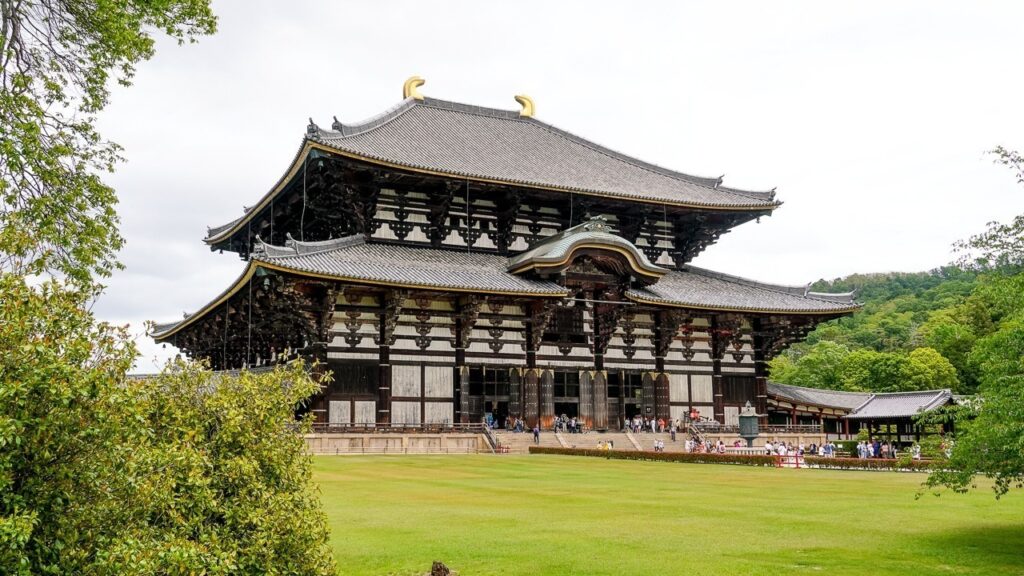
The grand Todai-ji, in Nara
More info: Todai-ji Temple is located in Nara Park and opens every day from 7:30am to 5:30pm (from April to October) and from
8:00am to 5:00pm (November to March). The entrance fee is ¥600 (USD 5.5) per person.
Senso-ji, in Tokyo
The oldest temple in Tokyo is also on this list, and in my opinion, is the best one in the city. It’s a very large complex composed of the main building, the Hozo-mon gate, the Kaminarimon, with the giant lanterns that absolutely amazed me, and the five-story Pagoda.
Legend has it that in 628, two fishermen found a statue of Kannon, the Buddhist goddess of mercy, on the Sumida River and handed it over to the village chief, who turned his own house into a temple for her. This legend rang a bell as it immediately reminded me of Our Lady of Aparecida, Patroness of Brazil – her legend also involves fishermen fishing a statue out of the river.
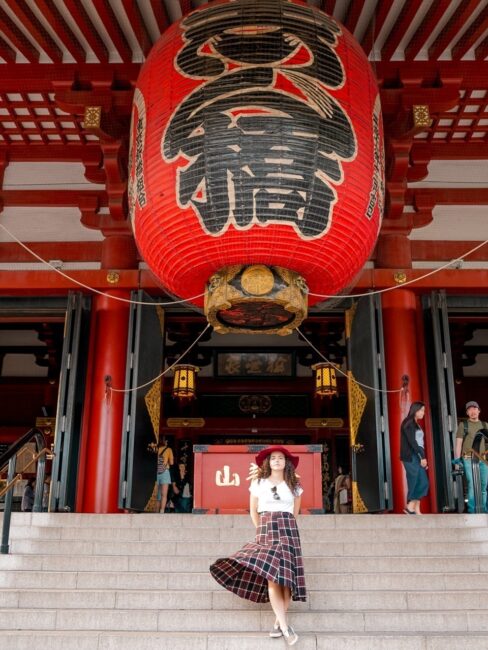
Entrance to the Senso-Ji temple, in Tokyo
More info: Senso-ji is located in Tokyo’s Asakusa district, considered the city’s old neighborhood. The main pavilion is open from 6am to 5pm, but the complex is always open to the public. Free entrance.
Kinkaku-ji, in Kyoto
As much as this temple divides opinions among the Japanese locals in Kyoto since some don’t like it very much for being too opulent, I can’t help but say that it impressed me a lot for its unique beauty and unlike any other temple I’ve seen.
Kinkaku-ji is better known as the Golden Pavilion, and the reason is that it’s entirely gold plated! The yellow contrasts with the garden, the lake waters, and the sky, and create a unique view. Initially, the temple was a village (second home) of the shogun and was later turned into a temple by his son. Since 1392, the temple bravely resisted many wars and earthquakes, but in 1949 a monk set fire to the site, fled and was later arrested. His mother committed suicide from such shame.
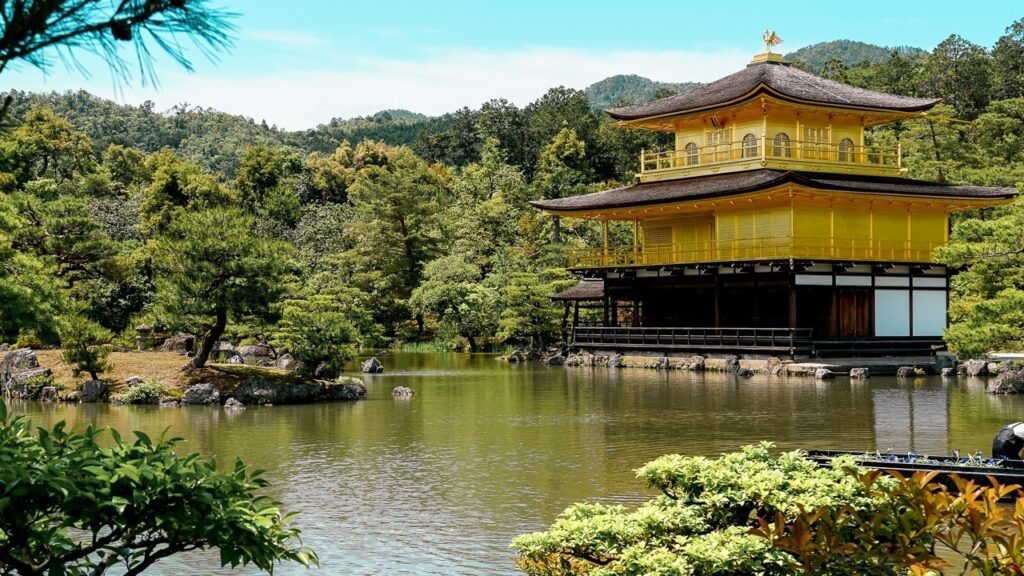
Kinkaku-ji, the famous golden pavilion temple in Kyoto
More info: admission costs ¥400 (USD 4) per person. Kinkaku-ji is just a little further north of Kyoto but is served by a bus line (101) that is even called the Sightseeing line because it passes by some major tourist spots, has multi-language recordings of some places where it stops, and still goes all the way to Kinkaku-ji with few stops (express line).
Kiyomizu-dera, in Kyoto
Another postcard of Kyoto and, also, is still a UNESCO World Heritage Site. According to our guide, the woods used in the temple last about 800 years, so there should be a renovation in around 400 years or so. As it’s not known if it will be possible to find the right trees, they bought land and planted countless trees that, in 400 years, will be grown and ready to be used in the renovation! Check out such level of organization in true Japanese fashion.
The temple is famous because of its wooden terrace, suspended from a hill where you can see the trees, sometimes red during autumn, sometimes pink because of the cherry blossoms or green, as it’s most of the time. The most striking is that there’s not a single nail in the temple structure, as the woods are all placed together, docked in each other.
As the terrace was being renovated, I visited only the surroundings and the “complex” of the temple. The ride was beautiful, and the place had a beautiful view of the city from the top of the hill.
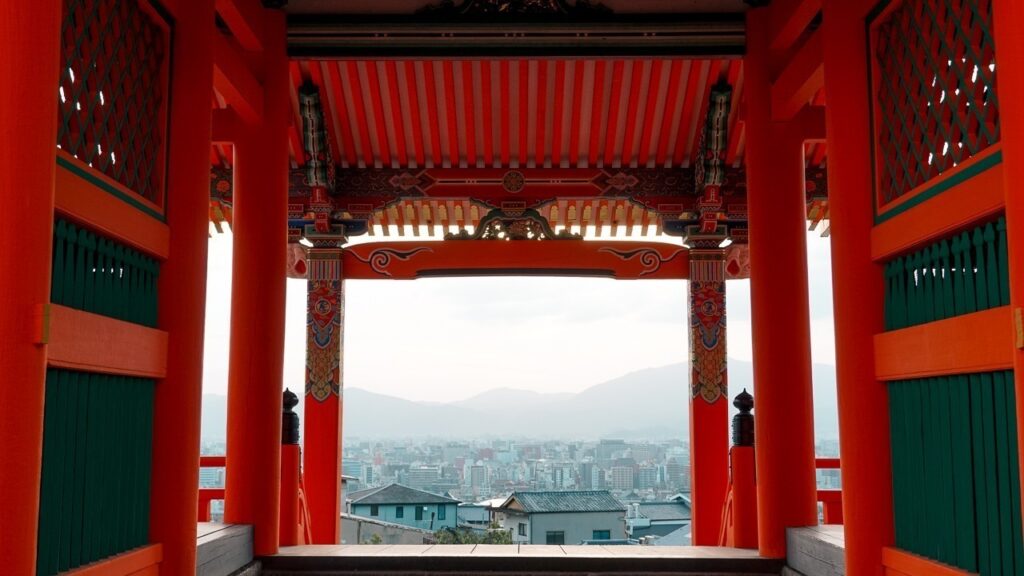
The structure framing the city of Kyoto.
More info: up to February 2020 the temple will be undergoing renovation, and parts of the main hall are covered. Admission costs ¥400 per person and is open from 6 am to 6 pm (on the weekends and during summer it stays open until 6:30 pm).
Otagi Nenbutsu-ji, in Kyoto (Arashiyama)
This temple won my heart, and for a few reasons. It was farther from the center of Arashiyama and not so visited by the tourists, so I had a more authentic and intimate feel. But what I liked most was seeing the 1200 Rakans (stone statue of the disciples of Shaka, the founder of Buddhism) that are scattered there and represent donations made in the 1980s.
Kocho Nishimura, the religious leader who was in charge of the temple at the time, had a brilliant idea to raise funds for the maintenance and preservation of the site. He was also a sculptor of Buddhist statues, so he began to receive visitors who would sculpt their own statues with his help, and receive donations from it. The cool thing is to see how each statue is different from one another and look for the funniest ones among so many.
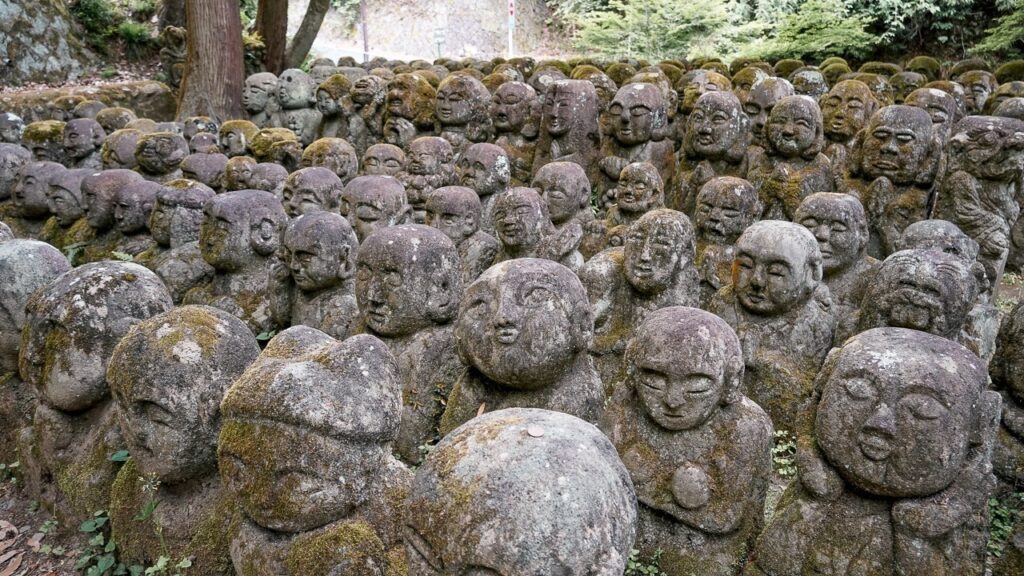
The moss on top of them just makes the whole scene all the more charming.
More info: the entrance is ¥ 300 (USD 2.8) per person, and the temple is open from 8 am to 5 pm (the gates close 15 minutes earlier). Include a visit here during your tour of the Arashiyama region. Start there, and walk down the Saga Toriimoto Preserved Street to Giouji Temple and continue to the Bamboo Forest and Tenryuji Temple.
Bonus: Sanjusangen-do, in Kyoto
One of my biggest heartbreaks was being unable to visit this temple in Kyoto. It is famous for the 1,001 Kannon (the goddess of mercy, remember?) Statues that make every tourist’s jaw drop. Besides that, the temple hall is considered the longest structure in the world. Like many other temples in Japan, it was also hit by a fire in 1264, exactly 100 years after its founding, and then rebuilt. Here’s the tip for the next travelers!






Deixe seu comentário